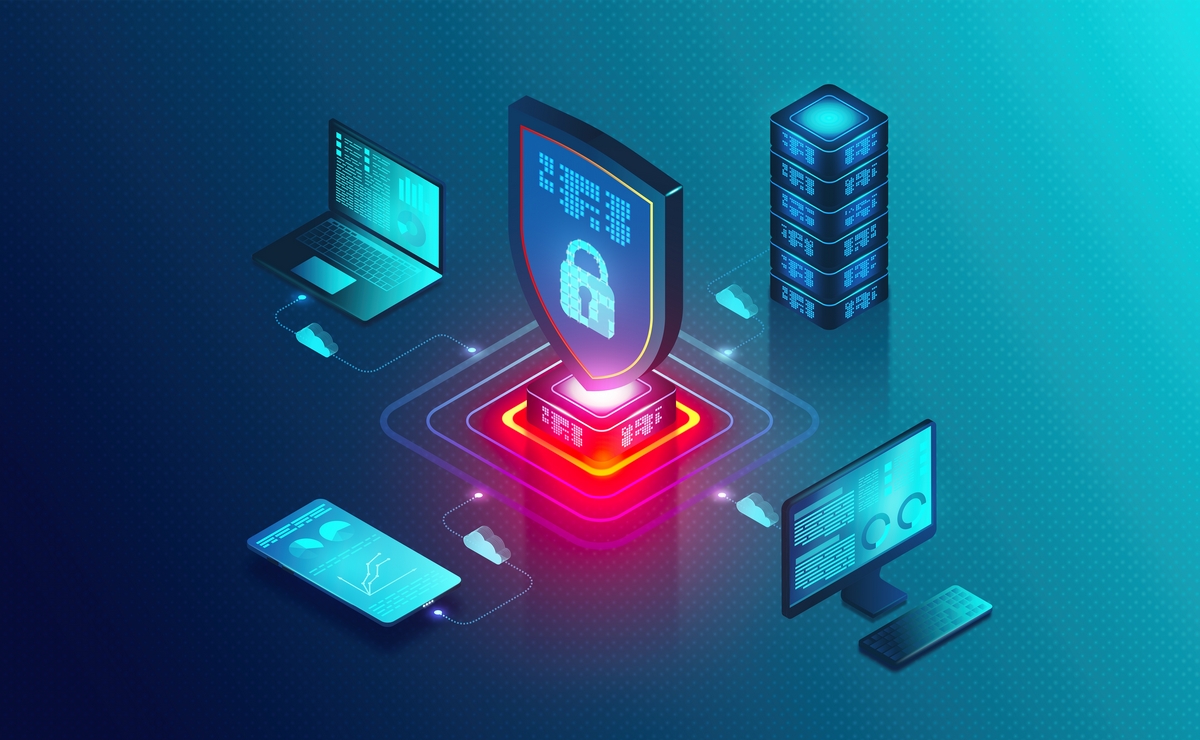Endpoint Protection
An endpoint device, also known as a terminal or end user device, is any remote computer connected to a network. Some of the most common examples are PCs, laptops, tablets, smartphones and TVs, application and database servers, switches and routers, etc.
As workforce becomes increasingly mobile, more and more companies begin to rely on endpoint devices, especially for remote access to internal resources.
The evolution of endpoints has provided companies with a much wider range of options, such as flexible working hours and being able to negotiate with suppliers, hold board meetings, or provide the best service to clients without employees’ physical presence at the office. Increased availability of data makes it harder to control access to it, because when the boundaries are blurred, it becomes more difficult to ensure endpoint device security.
High endpoint security risks are mainly caused by the use of personal devices for work (BYOD, Bring Your Own Device), since employees often connect to the company’s cloud-based resources from public places, such as airports, hotels, coffee shops, where the connection is unsafe.
Data protection poses a considerable challenge for today’s endpoint technology. Although cybersecurity has always been a major concern for companies, it is this new reality that made the development of effective measures even more crucial as traditional security solutions no longer suffice.
While organizations gain in connectivity and mobility, it often comes at the price of sacrificing security. It is becoming harder to make browsing safe, to implement an effective authentication system, to provide reliable identity management and access control, especially when it comes to maintaining traditional structures.
Many companies ignore the risks posed by the use of mobile endpoint devices, including tablets and smartphones, that rarely have such security solutions as advanced antivirus, a well-configured firewall, email protection, data encryption, etc.
There are also companies that lack an effective centralized management console that would control all the network components regardless of their operating system and make the security of endpoint devices its main priority due to the growing risks they pose.
Endpoint Security
Endpoint security systems protect the outermost boundary of the network infrastructure. They detect and respond to any threats or attacks even before the security devices within the network get involved.
Endpoint devices forming part of a network require basic security features to block malware that could infiltrate a company’s infrastructure, prevent loss of valuable data, and provide secure access to cloud-based email and web applications.
In a layered security scheme, endpoint security technologies, along with an antivirus and signatures also acting at the outer network boundaries, work to filter emails and block access to websites so that threats can be detected before they reach deeper network layers.
Endpoint protection generally operates on a client-server model, where a security program installed on a server controls a client program installed on each endpoint device in a centralized manner. The server program verifies and authenticates the client’s login credentials, as well as checks the device for compliance with the adopted corporate security standards before allowing network access.
Endpoint security management in a corporate network helps identify and manage user access from endpoint devices, ensuring compliance with the company’s policies and standards.
Effective endpoint security systems generally include a virtual private network (VPN) client and regularly updated antivirus software. They should restrict access to the network from devices that do not conform to the corporate policy.
The best endpoint protection solutions include an efficient management console controlling all endpoint devices, installation of applications, implementation of effective policies to protect the network against malware, prevent data loss, and manage devices with different operating systems (Windows, Mac, Linux, Android).
Advantages
Centralized endpoint security management reduces the security risks by:
- Combining all security functions in a single console
- Using business process-oriented security policies
- Providing the ability to configure security settings for all devices at once or for individual devices
- Providing maximum transparency and control of security features via a single dashboard
- Facilitating management of security policies for both devices and users
- Monitoring and reporting state changes that may affect information security at all levels of the organization
Effective Solutions
There are various types of endpoint security solutions currently available on the market. However, to guarantee their effectiveness, a company needs to instruct and support its employees both before and after the solution is deployed.
Here are some tips to help you make sure that endpoint devices will not be the most vulnerable point of your company’s security infrastructure:
- Use the most advanced threat detection solutions as it may take a long time to identify an attack and respond to it. By shortening this time, you will be able to minimize the consequences.
- An antivirus cannot be the only means of protection. For a higher level of endpoint security, you will also need authentication systems, identity management and access control solutions, etc.
- Implement solutions capable of detecting both known (using signatures) and unknown attacks (for example, using behavior analysis).
- Establish rules for creating restore points in order to be able to return to the last trusted state before the attack, then perform a forensic investigation to determine what happened and why.
- Focus on training and building awareness among users, create a corporate culture of security and improve it continuously to keep up with increasingly complex threats and be prepared to protect data in any environment.
Data protection in general and endpoint security in particular cannot be left entirely to professional security teams. It is important that we work tirelessly together to build a security culture within the organization where every employee understands the risks and importance of information security.
